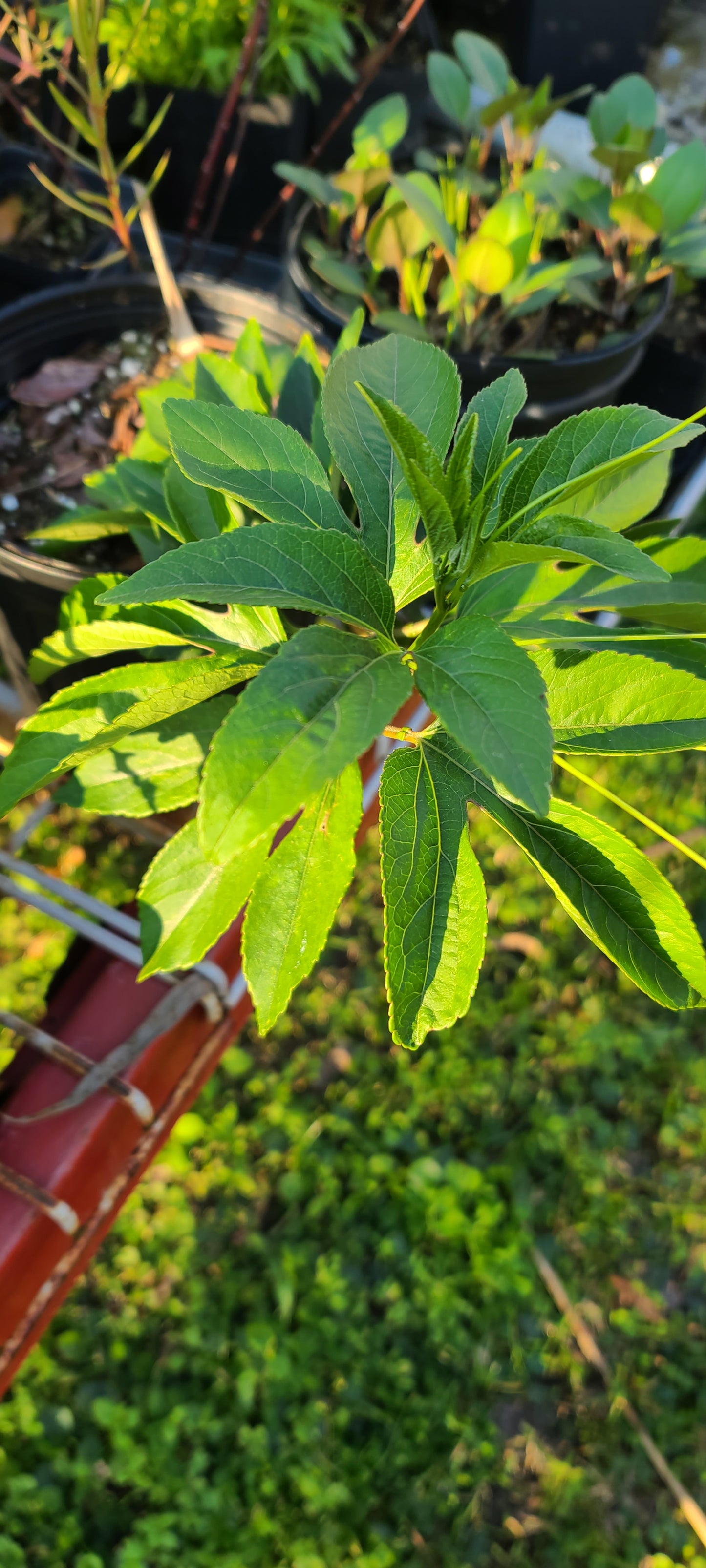Gnarly Nursery
Passiflora incarnata, Passionflower
Passiflora incarnata, Passionflower
Out of stock
Couldn't load pickup availability
Passionflower
Purple passionflower (Passiflora incarnata), also known as Maypop, is an herbaceous, perennial vine that occurs naturally in open hammocks, along roadsides, and in disturbed areas. It is a larval host plant of several butterflies including the Gulf fritillary, Variegated fritillary and Zebra longwing. Bees, especially bumble and carpenter, find the flowers attractive and are the plant’s primary pollinators.
Purple passionflower has an extraordinarily intricate flower, resembling something out of a Dr. Seuss book. It has 10 lavender tepals, a purple-and-white-fringed corona, a central “crown” of pink filaments, and a conspicuous style and stamens. The leaves are deeply three-lobed and alternately arranged, with dark green upper and whitish lower surfaces. The fruit is a large yellow-orange berry with edible pulp that is typically born in late summer to fall. The plant can be prostrate or climbing by way of axillary tendrils.
The fruit can be eaten raw or made into jam, jelly or juice.
Family: Passifloraceae (Passionflower family)
Native range: Nearly throughout
To see where natural populations of Purple passionflower have been vouchered, visit florida.plantatlas.usf.edu.
Hardiness: 8A–10B
Lifespan: Perennial
Soil: Well-drained, sandy, loamy or calcareous soils
Exposure: Full sun to partial shade
Growth habit: 3–12’+ long
Propagation: Seed, cuttings, division
Garden tips: Purple passionflower can spread vigorously on its own, covering a lot of ground in a short time. It is deciduous and will usually die back in the winter. It is drought tolerant and moderately salt tolerant.
Caution: Tropical passionfruit (P. edulis) is widely cultivated for its juice and is used to flavor fruit punches. It looks somewhat similar to Purple passionflower and has become naturalized in South Florida. P. foetida and P. biflora (an invasive species) are also becoming locally established and should be avoided.
Share



